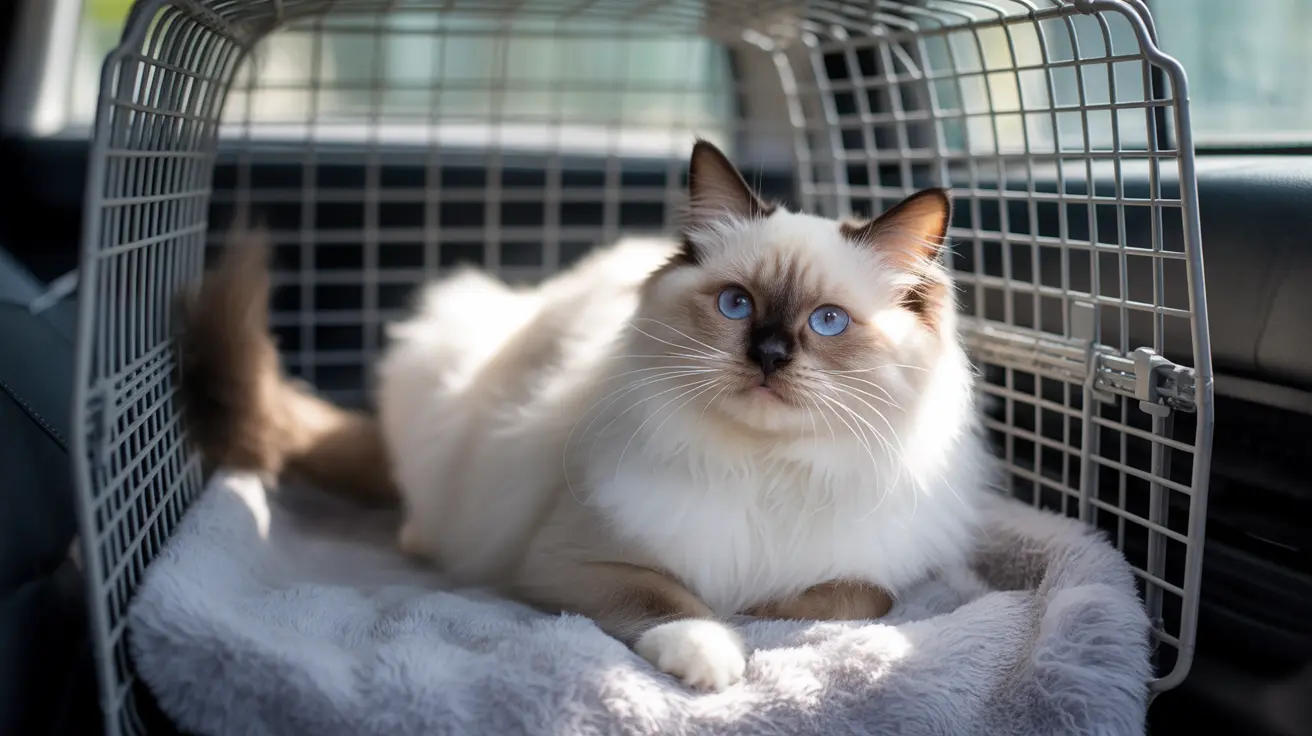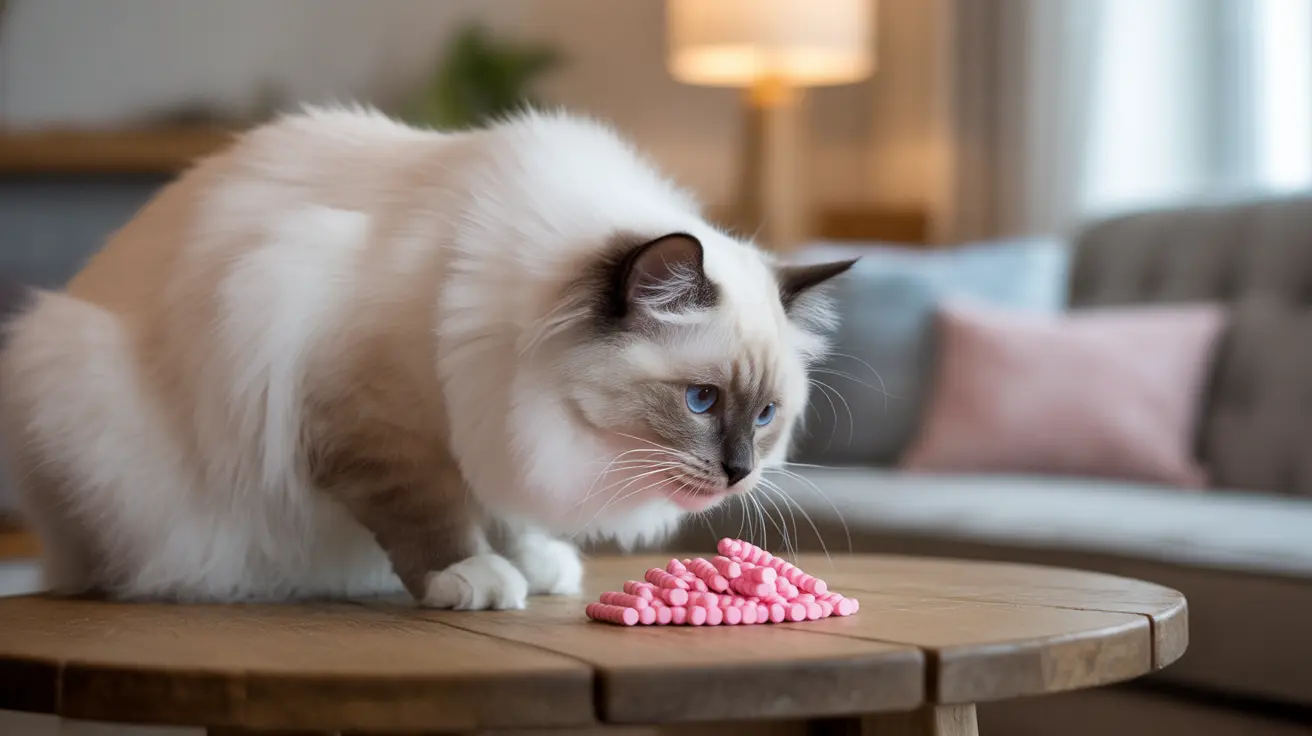How to Comfort Your Cat During Car Trips to the Vet: A Complete Guide for Stress-Free Travel
Taking your cat to the veterinarian doesn't have to be a traumatic experience for either of you. While most cats naturally dislike car rides and unfamiliar environments, with proper preparation and the right techniques, you can significantly reduce your feline companion's stress during these necessary trips. Understanding your cat's needs and implementing proven calming strategies will make veterinary visits more manageable and less anxiety-inducing for your pet.
The key to successful cat transport lies in thorough preparation, using appropriate safety equipment, and employing calming techniques that address your cat's specific temperament and needs. From choosing the right carrier to implementing behavioral training well before your scheduled appointment, every step you take in advance will contribute to a more comfortable journey for your cat and peace of mind for you as a responsible pet owner.
Choosing the Right Carrier for Your Cat's Comfort and Safety
The foundation of comfortable cat transport begins with selecting an appropriate carrier that serves as your cat's safe haven during the journey. The carrier you choose should be large enough for your cat to stand, stretch, and turn around comfortably, as cramped conditions will only increase stress levels. Hard-shell carriers with minimal windows are generally preferred over soft carriers, especially for anxious cats, as they provide better security and protection.
For cats that experience high levels of travel stress, consider carriers with removable tops, which make it easier to place your cat inside without forcing them through a small door opening. Soft carriers work better for naturally calm, placid cats who don't require the additional security of rigid walls. The carrier should be distinct from any carrier you might use exclusively for vet visits to avoid creating negative associations with car travel in general.
Always carry the carrier from the bottom for stability rather than by the handle alone, as this prevents unnecessary swaying that can increase your cat's anxiety. Ensure the carrier can be properly secured in your vehicle with a seatbelt to prevent it from being thrown during sudden stops or turns.
Training Your Cat to Accept the Carrier
Successfully training your cat to tolerate and even feel comfortable in their carrier requires patience and positive reinforcement techniques implemented weeks before any planned travel. Start by leaving the carrier accessible in your home as a regular piece of furniture, allowing your cat to explore it naturally without any pressure or forced interaction.
Place cozy blankets, familiar bedding, and high-value treats inside the carrier to create positive associations. Feed your cat inside the carrier occasionally, and reward them with treats and praise whenever they voluntarily enter or spend time inside. This process helps transform the carrier from a source of anxiety into a familiar, safe space.
Gradually progress to closing the door for short periods while your cat is inside, then practice carrying the carrier around your home. Once your cat is comfortable with these steps, conduct practice car rides that start very short and gradually increase in duration. This systematic desensitization helps your cat build tolerance for the experience before it becomes necessary for an actual vet visit.
Essential Safety Measures During Car Transport
Proper restraint is crucial for both your cat's safety and your ability to drive without dangerous distractions. Your cat must always remain in a securely closed carrier or wear a proper harness and leash system designed for vehicle travel. Never allow your cat to roam freely in the car, as this creates serious safety hazards and can cause accidents.
The carrier must be secured with a seatbelt to prevent it from becoming a projectile during sudden stops, turns, or potential accidents. Position the carrier so it won't slide around during normal driving maneuvers. If using a harness and leash system, ensure secure leash anchors are properly installed in your vehicle.
Drive carefully and avoid sudden jolts, rapid acceleration, or hard braking that can throw your cat around inside the carrier. Maintain a quiet atmosphere in the car, avoiding loud music or sudden noises that might startle your pet. Never leave your cat alone in the car, especially during warm weather, as temperatures can rise to dangerous levels very quickly.
Calming Techniques and Products
Implement calming strategies that begin well before your departure and continue throughout the journey. Feliway Classic Spray, a synthetic feline pheromone product, can be particularly effective when sprayed on blankets inside the carrier. Start using pheromone products a week or two before travel for maximum effectiveness, and avoid spraying directly on your cat.
Tire out your cat with active play sessions before travel to encourage sleep during the journey. A tired cat is generally a calmer cat, and the physical exhaustion can help counteract anxiety-induced alertness. Playing calming music specifically designed for cats can also help create a soothing environment during the ride.
Include familiar items in the carrier such as a towel or small blanket that smells like home or like you. These familiar scents provide comfort and reassurance in the unfamiliar environment of the car. Some cats may benefit from Rescue Remedy drops applied to their ears or bedding, though you should consult with your veterinarian before using any calming supplements.
Managing Feeding and Hydration During Travel
Proper feeding and hydration management can prevent travel sickness and reduce your cat's overall stress during the journey. Keep your cat on an empty stomach during travel to reduce the likelihood of nausea and vomiting. Avoid feeding your cat for several hours before departure, but ensure they have access to water.
During longer trips, stop regularly to offer water from home, as familiar-tasting water is more likely to be accepted than water from unfamiliar sources. Bring along water from your home supply rather than relying on water available at stops along the way. For extended journeys, the carrier should be large enough to accommodate a small travel litter box.
Line the carrier with absorbent pads to handle any accidents that might occur during the journey. Pack extra supplies for cleanup, including plastic bags, paper towels, and disinfectant wipes. Plan your feeding schedule so that regular meals resume once you reach your destination.
Preparing Your Car Environment
Create the most comfortable possible environment inside your vehicle before placing your cat in the car. Maintain comfortable temperatures that account for your cat's needs – keep them cool in summer and warm in winter. Use sunshades if necessary to prevent direct sunlight from heating the carrier.
Consider installing car protection blankets to prevent damage from scratching or accidents while also providing additional sound dampening. Safety nets or partitions can provide an extra barrier if you're using a harness system rather than a carrier. Ensure proper ventilation with fresh air vents, but avoid creating drafts that might chill your cat.
If your car tends to have strong odors from air fresheners, previous passengers, or other sources, allow time for airing out before your cat's trip. Cats have sensitive noses, and overwhelming scents can add to their travel stress.
When to Consult Your Veterinarian
Before any car travel, especially if your cat has a history of severe travel anxiety, consult with your veterinarian about your cat's fitness for travel and potential medical interventions. Ensure your cat's vaccinations are up to date and that they're healthy enough to cope with travel stress.
If your cat experiences extreme travel stress, your veterinarian may recommend medications such as acepromazine, a commonly prescribed sedative for travel anxiety. Over-the-counter options like Benadryl (diphenhydramine) may help some cats but are less reliable and should only be used under veterinary guidance, as some human medications can be dangerous to cats.
Always trial any medications well in advance of your actual travel date to observe how your cat reacts and to determine the appropriate dosage. Some cats may have variable reactions to sedatives, so testing beforehand is essential for safe travel.
Planning for Vet Visit Success
Schedule your vet appointments during cooler parts of the day when possible to avoid heat stress, especially during summer months. Allow extra time in your schedule to avoid rushing, which can increase both your stress and your cat's anxiety levels.
When you arrive at the veterinary clinic, notify the staff immediately so your cat can wait in a quiet space rather than a busy waiting room filled with other stressed animals. Many clinics offer separate waiting areas for cats or can accommodate early arrivals in examination rooms.
Bring all necessary documentation including vaccination records, medication lists, and your cat's medical history. Having everything organized and ready will make the visit more efficient and reduce the time your cat spends in an unfamiliar environment.
Frequently Asked Questions
How long before a vet visit should I start preparing my cat?
Begin carrier training and preparation at least 2-3 weeks before your scheduled appointment. Start using pheromone sprays 1-2 weeks in advance, and conduct practice car rides several days before the actual visit to help your cat adjust gradually.
Is it safe to give my cat medication to calm them during car travel?
Only use medications prescribed or approved by your veterinarian. Acepromazine is commonly prescribed for travel anxiety, but any medication should be tested in advance to observe your cat's reaction. Never use human medications without veterinary approval, as some can be dangerous to cats.
Should I feed my cat before a car trip to the vet?
Keep your cat on an empty stomach during travel to prevent motion sickness and vomiting. Avoid feeding for several hours before departure, but ensure they have access to water. Resume normal feeding once you reach your destination.
What should I do if my cat becomes extremely stressed during the car ride?
Pull over safely and speak to your cat in calm, reassuring tones. Avoid opening the carrier while the car is moving. If stress levels remain extreme, consult your veterinarian about stronger calming medications or alternative transport methods for future trips.
Can I let my cat out of the carrier once we're in the car?
Never let your cat out of the carrier while the car is moving, as this creates serious safety hazards and can cause accidents. If you must check on your cat, pull over completely and ensure all doors and windows are secured before opening the carrier.
How can I tell if my cat is experiencing travel stress?
Signs of travel stress include excessive vocalization, panting, aggression, drooling, excessive licking, and attempts to escape the carrier. Some cats may also have accidents or refuse to eat or drink during travel.
What items should I always bring for vet trips?
Essential items include a secure leash and harness, familiar blankets, cleaning supplies, plastic bags, water from home, any required medications, vaccination records, and absorbent pads for the carrier. For longer trips, include a small travel litter box and supplies.
Conclusion
Successfully transporting your cat to veterinary appointments requires patience, preparation, and understanding of your feline companion's unique needs. By implementing proper carrier training, safety measures, and calming techniques well in advance of your scheduled visits, you can transform what is often a stressful experience into a manageable routine that prioritizes your cat's comfort and well-being.
Remember that every cat is different, and what works for one may not work for another. Stay calm during the journey, as cats are highly sensitive to their owner's emotional state, and don't hesitate to consult with your veterinarian about additional strategies or medications if your cat continues to experience severe travel anxiety. With consistent effort and the right approach, you can help ensure that necessary veterinary care doesn't become a traumatic experience for your beloved pet.






